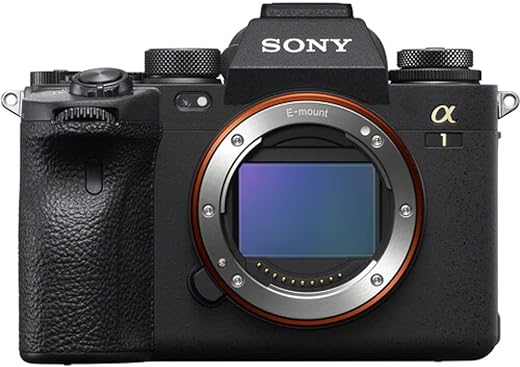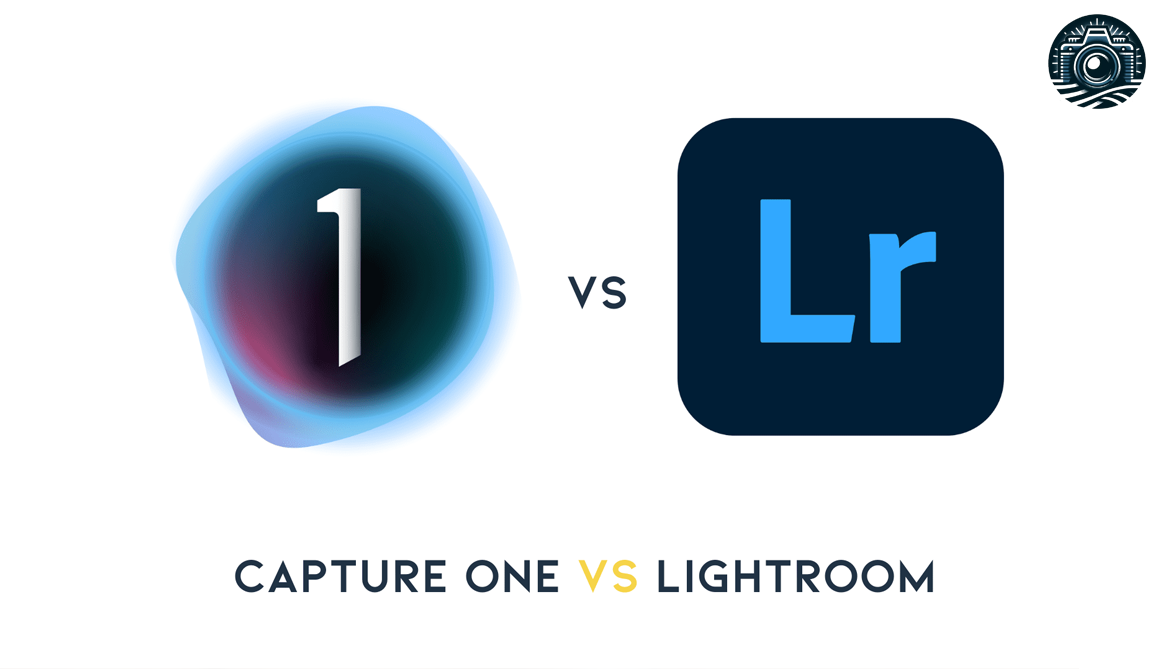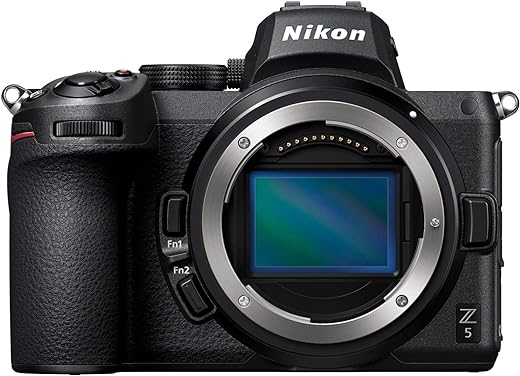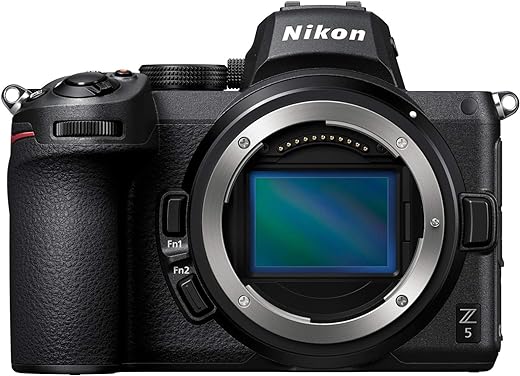In this comparison, we will explore the features and capabilities of the Sony Alpha 1 Mirrorless, Sony A7R III Camera, and Nikon Z9 Bundle. These cameras offer advanced technology and impressive performance, catering to a range of photography needs. Let’s dive in to see how each model stacks up against the others!
Capturing Brilliance
The Sony Alpha 1 Mirrorless Camera boasts a 50.1MP full-frame sensor with rapid image processing, enabling blackout-free shooting at 30fps. With cutting-edge features like a 240 fps refresh rate EVF and anti-flicker shutter, it promises unparalleled performance for professional photographers.
Professional Photography
The Sony Alpha 7R III Mirrorless Camera boasts a 42.4MP full-frame sensor and advanced BIONZ X processor for stunning image quality. With features like Real-time AF tracking, 4K HDR video, and fast hybrid autofocus, this camera is a top choice for photographers seeking high resolution and exceptional performance.
Professional Photography
The Nikon Z9 Mirrorless Camera with FTZ II Adapter Kit offers a powerful 45.7MP Stacked CMOS sensor and EXPEED 7 image processing, enabling lightning-fast autofocus and subject detection using deep learning technology. With the ability to capture high-resolution stills at impressive frame rates and no viewfinder blackout, this camera is perfect for capturing fast-moving subjects in both stills and video.
Sony Alpha 1 Mirrorless
Sensor Type
50.1MP full-frame stacked Exmor RS CMOS sensor w/ integral memory
Image Processor
BIONZ XR image processing engine
Continuous Shooting
Up to 30fps
Autofocus System
Real-time AF tracking
Viewfinder
240 fps refresh rate, 9.44M dot 0.64” QXGA OLED EVF
Sony A7R III Camera
Sensor Type
42.4MP full-frame Exmor R CMOS sensor
Image Processor
BIONZ X processor
Continuous Shooting
Up to 10fps
Autofocus System
Fast Hybrid autofocus: 399 phase-detection / 425 contrast points
Viewfinder
–
Nikon Z9 Bundle
Sensor Type
45.7MP Stacked CMOS sensor
Image Processor
EXPEED 7 image processing
Continuous Shooting
45.7MP stills at 20 or 30 fps
Autofocus System
Fast powerful AF with deep learning subject detection
Viewfinder
–
Sony Alpha 1 Mirrorless
Sony A7R III Camera
Nikon Z9 Bundle
Sony Alpha 1 Mirrorless
Sony A7R III Camera
Nikon Z9 Bundle
Feature comparison chart
| Feature | Sony Alpha 1 | Sony Alpha 7R III | Nikon Z9 |
|---|---|---|---|
| Megapixels | 50.1 | 42.4 | 45.7 |
| Video Resolution | 8K | 4K | 8K |
| Autofocus | Fast Hybrid AF | Fast Hybrid AF | Quadra-AF |
| Image Processor | BIONZ XR | BIONZ X | EXPEED 7 |
| ISO Range | 100-32000 | 100-32000 | 64-25600 |
| LCD Screen | 3″ tiltable | 3″ tiltable | 3.2″ tiltable |
| Connectivity | Wi-Fi, Bluetooth | Wi-Fi, NFC | Wi-Fi, Bluetooth |
| Weather Sealing | Yes | Yes | Yes |
| Battery Life | 530 shots | 650 shots | 420 shots |
Sony Alpha 1
- USPs:
- 50.1MP resolution for high-quality images.
- 8K video recording capability.
- Fast Hybrid AF for quick and accurate focusing.
- Pros:
- Top-notch image quality.
- Excellent autofocus performance.
- Cons:
- Higher price point.
- Use-Cases:
- Ideal for professional photographers and videographers.
Sony Alpha 7R III
- USPs:
- 42.4MP high-resolution sensor.
- 4K HDR video recording.
- Front End LSI Image Processor for enhanced speed.
- Pros:
- Great balance of resolution and speed.
- Versatile for various shooting scenarios.
- Cons:
- Slightly lower battery life.
- Use-Cases:
- Suitable for enthusiasts and professionals seeking high resolution.
Nikon Z9
- USPs:
- 45.7MP sensor for detailed images.
- Quadra-AF for precise focusing.
- EXPEED 7 processor for fast performance.
- Pros:
- Impressive autofocus system.
- Well-rounded feature set.
- Cons:
- Limited ISO range compared to competitors.
- Use-Cases:
- Appeals to Nikon loyalists and photographers needing speed and accuracy.
Based on the comparison, the Sony Alpha 1 stands out for its high resolution, top-tier video capabilities, and advanced autofocus system, making it the clear winner for professionals demanding the best performance across photo and video work. However, for users valuing a balance between resolution and speed at a slightly lower price point, the Sony Alpha 7R III is a strong contender. The Nikon Z9 caters well to photographers who prioritize speed and precision in a more compact form factor but may lack in some areas compared to the Sony models.
Nikon Z9 vs Sony Alpha 1: Mirrorless Camera Showdown
Comparing Nikon Z9 Mirrorless Camera vs Sony Alpha 1 Mirrorless Digital Camera
When choosing between the Nikon Z9 and Sony Alpha 1 mirrorless cameras, there are several key factors to consider to make an informed decision.
Factors to Consider
1. Sensor Size and Resolution
- Nikon Z9: 45.7MP Full-Frame CMOS sensor
- Sony Alpha 1: 50.1MP Full-Frame Exmor RS CMOS sensor
2. Autofocus Performance
- Nikon Z9: 493-Point Phase-Detection AF system
- Sony Alpha 1: 759-Point Phase-Detection and 425-Point Contrast-Detection AF system
3. Continuous Shooting Speed
- Nikon Z9: Up to 20 fps with full AF/AE
- Sony Alpha 1: Up to 30 fps with full AF/AE
4. Video Capabilities
- Nikon Z9: 8K video recording at 30p
- Sony Alpha 1: 8K video recording at 30p
5. In-Body Image Stabilization (IBIS)
- Nikon Z9: 5-Axis IBIS up to 6 stops
- Sony Alpha 1: 5.5-Axis IBIS up to 5.5 stops
6. Ergonomics and Build Quality
- Nikon Z9: Weather-sealed magnesium alloy body
- Sony Alpha 1: Weather-sealed magnesium alloy body
Key Points
- Both cameras offer exceptional image quality and performance.
- Sony Alpha 1 has a higher resolution sensor and faster continuous shooting speed.
- Nikon Z9 provides excellent video capabilities and slightly better IBIS performance.
- Consider your specific needs such as photography style, preferred brand, and budget when making a decision.
By evaluating these factors and considering your own shooting preferences, you can determine which camera best suits your needs in the Nikon Z9 vs Sony Alpha 1 comparison.
Comparing Nikon Z9 and Sony Alpha 1 Cameras
When comparing the video capabilities of these cameras, the Sony Alpha 1 offers impressive 8K video recording capabilities, making it a top choice for professional videographers. The Sony Alpha 7R III also excels in video quality with its 4K HDR video recording feature. On the other hand, the Nikon Z9 is known for its exceptional video performance with features like 8K recording and advanced video settings. Each camera has its strengths, so the choice would depend on your specific video needs and preferences.
When it comes to sports and action photography, the Sony Alpha 1 Full-frame Interchangeable Lens Mirrorless Camera is widely regarded as one of the best options available in the market. With its impressive autofocus system, high continuous shooting speeds, and excellent image quality, the Sony Alpha 1 excels at capturing fast-moving subjects with precision and clarity. This camera is equipped to handle the demands of sports and action photography, making it a top choice for professionals and enthusiasts alike.
When considering whether the upgrade to the Sony Alpha 1 or Nikon Z9 is worth it for current Sony A7R III users, there are several factors to consider:
- Image Quality: Both the Sony Alpha 1 and Nikon Z9 offer superior image quality compared to the Sony A7R III, with higher resolution sensors and improved image processing capabilities. If you require the absolute best image quality available, the upgrade may be worth it.
- Speed and Performance: The Alpha 1 and Z9 boast faster burst shooting rates and improved autofocus systems compared to the A7R III. If you frequently shoot fast-moving subjects or require top-notch performance, the upgrade could benefit you.
- Video Capabilities: The Sony Alpha 1 and Nikon Z9 are both capable of shooting high-quality 4K video with advanced features. If videography is a significant part of your work, upgrading to one of these models may be worth it.
- Cost: It’s essential to consider the cost of upgrading to the Alpha 1 or Z9, including the price of the camera body and any additional accessories you may need. Evaluate whether the improvements in these newer models justify the investment for your specific needs.
In conclusion, whether the upgrade to the Sony Alpha 1 or Nikon Z9 is worth it for current Sony A7R III users depends on your individual requirements and budget. We recommend comparing the features and performance of each camera to determine which best aligns with your photography needs.
Certainly! Here are the key differences between the Sony Alpha 1, Sony A7R III, and Nikon Z9:
- Sony Alpha 1:
- Features a high-resolution 50.1MP full-frame sensor.
- Boasts impressive 30fps continuous shooting speed.
- Offers 8K video recording capabilities.
- Advanced autofocus system with 759 phase-detection points.
- Excellent low-light performance with an expanded ISO range.
- Sony A7R III:
- Equipped with a 42.4MP full-frame sensor.
- Enhanced 5-axis in-body image stabilization.
- 10fps continuous shooting speed.
- 4K video recording capabilities.
- Dual SD card slots for extended storage options.
- Nikon Z9:
- Comes with a newly developed high-resolution stacked sensor.
- Offers 20fps continuous shooting speed.
- 8K video recording capabilities with 10-bit 4:2:2 output.
- Advanced subject tracking and autofocus system.
- Weather-sealed and durable magnesium-alloy body construction.
These differences highlight the unique strengths and capabilities of each camera, catering to the specific needs of different photographers and videographers.















10 thoughts on “Sony Alpha 1 vs Sony A7R III vs Nikon Z9 Comparison”
It would be interesting to see a comparison in terms of video capabilities as well.
The low-light performance section was really informative, that’s a key factor for my shooting conditions.
Great comparison! I appreciate the detailed breakdown of features for each camera.
I appreciate that the article highlighted the ergonomic differences, usability is key for me.
I wish there were more sample images included to showcase the differences in image quality.
The autofocus performance comparison is crucial for my photography needs, thanks for including that.
The pricing information provided is really helpful for making a decision between these cameras.
I’m surprised by the weight and size differences between these cameras, it’s something to think about.
Overall, a well-rounded comparison that helps understand the strengths of each camera model.
I own the Sony A7R III and this comparison is making me consider upgrading to the Sony Alpha 1.
Comments are closed.